Advances in innovation within security systems continuously change the approach we take towards protecting both private and workspaces. One such notable advancement is fisheye cameras—state-of-the-art devices capable of providing 3600 panoramic surveillance with unrivaled clarity and coverage. These cameras do not just eliminate blind spots; they also improve monitoring effectiveness by amalgamating multiple views into a single image. This article will delve into the world of fisheye cameras, their capabilities, technical features, and the benefits of these models in security solutions, especially how fisheye cameras can provide better surveillance. From business proprietors, security experts, or simply interested in modern technology, this article will furnish all the necessary information for informed choices on security requirements.
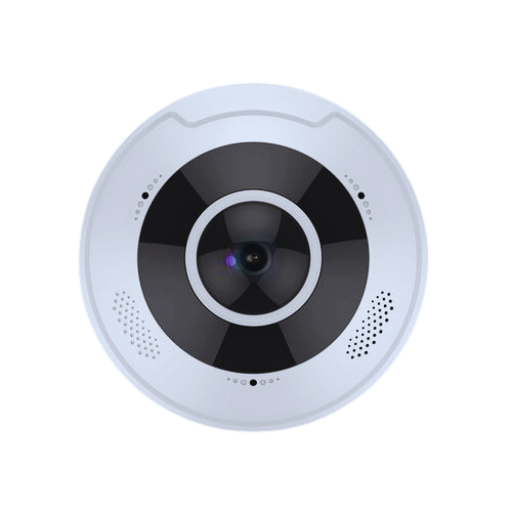
As a type of surveillance camera, a fisheye camera uses ultra-wide angle lenses that can capture a field of view between 180 and 360 degrees. Captured images are undistorted unlike the images filmed by standard lens cameras and therefore the camera can monitor large spaces with ease. Fisheye cameras convert the footage captured to a digital format while employing dewarping technologies that convert a spherical image into a flat one. This allows the user to monitor a specific place with great detail alongside broad situational awareness
Surveillance cameras employ fisheye technology, which makes use of ultra-wide hemispherical lenses to capture a view of the region being monitored. This allows the camera to record images up to 180 degrees, making it beneficial for security purposes as well as panoramic photography. These lenses are sculpted in a manner that forms a spherical distortion which permits large areas to be scoped with lesser cameras. Newer cameras are designed with dewarping programs that process these images and transform the fisheye views into two-dimensional rectangular shapes while preserving detailed and useful visuals.
Fisheye cameras are uniquely suited for surveillance in retail stores, parking lots, and large venues because of their wide-angle coverage which captures an entire area using a single camera. These cameras reduce the need for additional cameras which lowers the cost of installing multiple cameras, as well as simplifies the installation process. Additionally, fisheye cameras can monitor larger areas than other cameras, which reduces blind spots and improves coverage further. The use of advanced dewarping software integrated into fisheye cameras enables the capture of detailed images while effectively addressing distortion and other details that would impede security measures.
Ultra-wide angle lenses create a fisheye effect which distorts the images captured forming a spherical structure. These lenses capture images with a field of view ranging from 180 perspectives to 270 degrees which enables the users to capture broader scenes due to the fisheye lenses making wider scopes to be viewed in one frame. Nevertheless, because of its warped structure, straight edges close to the image border will appear to be curved or distorted which causes problems to the accuracy of the spatial measurements.
In image processing, modern technologies have reduced these challenges. With the help of the dewarping algorithms, the images captured by fisheye lenses can be changed to be more useful in applications like surveillance and architectural designing. Research has suggested that during the dewarping process, up to 90% of the details of the original images can be preserved while much of the distortion is eliminated. This confirms that these types of lenses can be used for artistic photography, as well as scientific and engineering purposes.
Moreover, the large field of view captured by fisheye lenses increases their efficiency in the production of panoramic images and 360-degree videos. Studies indicate that these lenses can reduce the required number of cameras in such configurations by nearly 40%, offering economical options without compromising on quality. Although the fisheye effect is difficult to cope with, advances in technology are broadening the scope for its application in other industries.
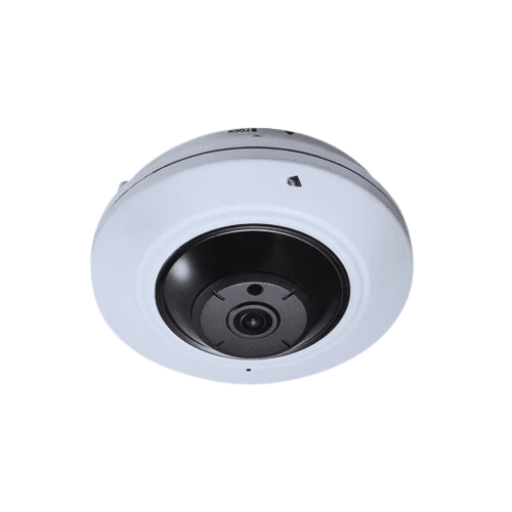
The performance metrics of a fisheye camera are its field of view as well as the panoramic capabilities which are vital for surveillance, photography, and video production. Such cameras have angles of view from 180 degrees to 360 degrees which comprehensively cover the surroundings with no need for multiple units. This is particularly useful in airport security, retail store monitoring, and public events management, where capturing holistic scenes augments operational efficiency and safety.
A good example would be a fisheye camera used at a retail store where the camera is able to eliminate blind spots and monitor a single sales floor from one location. There is statistically better coverage compared to the use of traditional cameras, thus eliminating the need to install a lot of cameras which in turn reduces the hardware and installation costs. Furthermore, the ability to attach footage captured from different angles enables a single stunning image or video stream to be produced. This ensures there is no fragmentation in captured data that is essential for 3D imaging and virtual reality. Such arbiters of difference strengthen the importance of choosing the right fisheye camera in order to achieve success in the professional and technical scopes of work.
Sharpness, color reputation, dynamic range, and noise reduction are a few factors critical when assessing image quality captured. The use of modern 4K resolution cameras increases these dimensions by featuring a pixel density of approximately 8.3 million pixels or four times that of Full HD. This greatly contributes to detail clarity pixel count which pixel clarity increases further with more professional applications like video production, surveillance, and machine vision systems contributing to the refinement of precision and detail.
Dynamic range is aided with 4K technology through the support of advanced High Dynamic Range (HDR) imaging. HDR ensures that finer details in highlights and shadows are captured and balanced during exposure and lighting in some cases. Furthermore, a set degree of cropping during post-production of the footage is made possible, allowing zooming in to the footage without losing a lack of sharpness.
4K resolution also provides the possibility of supporting modern color reproducing sensors as well as processing systems employed in 4 cameras which frequently support wider color gamut like DCI-P3 or Rec. 2020 which are vital in ultra-realistic visuals. Progresses in algorithms responsible for the creation of noise also ensure grain is minimal and visual integrity is preserved in various places, especially in low light regimes.
The intricate details provided make 4K cameras pivotal in cybersecurity, filmmaking, scientific analysis, and other fields requiring utmost precision and image fidelity.
The new generation of 4K cameras with night vision and infrared (IR) capabilities are changing the photo-capturing landscape in low light conditions. These technologies make use of infrared light and sensitive illuminators with the capability to transform them into high-quality images. While most cameras are sensitive to the near-infrared band from 700 to 1,000 nanometers (nm), these cameras can capture movements and heat signatures because they are sensitive to IR radiation.
New features in IR technology such as multi-IR LEDs and adaptive IR intensity provide uniform illumination over large areas while minimizing the likelihood of overexposure. For example, some modern camera models have their IR range extended to up to 300 meters which enables the user to capture clear images in total darkness. In addition, back-illuminated CMOS sensor technology allows these cameras to capture fine details while reducing noise in night vision recording.
These capabilities are invaluable in surveillance, monitoring wildlife, or even scientific exploration where highly detailed images are required under low light conditions. In combination with smart algorithms such as automatic IR mode switching and AI object detection, 4k cameras can provide the most dependable visual data with unmatched quality in their nighttime functionality.
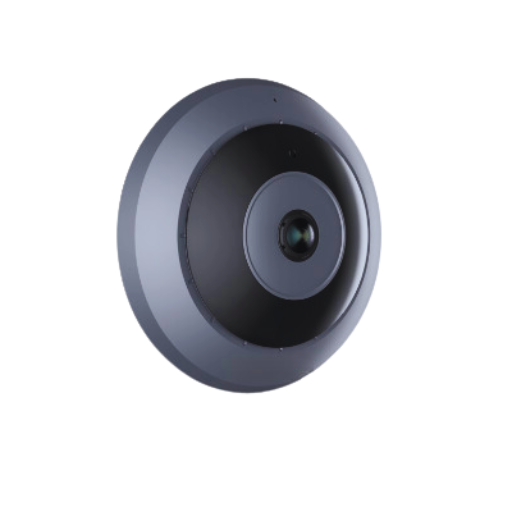
Fisheye cameras with 360-degree viewing range are specially made to cover all the angles and eliminate blind spots which makes these cameras suitable for comprehensive monitoring of large spaces like warehouses, parking lots, and industrial zones. Such cameras make use of ultra-wide angle lenses able to capture entire scenes in a single view with fewer cameras installed, therefore minimizing installation costs and the need to use multiple cameras.
Modern fisheye cameras come with advanced de-wrapping algorithms that assist in processing the footage from the cameras that are curved into flat, distortion-free images for easier analysis. Research has proven that with the appropriate resolution and monitoring height, one fisheye camera is capable of monitoring up to 5,000 square feet which is highly beneficial from a surveillance productivity standpoint.
Various AI analytics features like motion capture, object tracking, and even facial recognition are now available in most 360-degree fisheye AI cameras. These features allow for more efficient monitoring as they help in spotting critical actions or events in real-time thus boosting overall security efficiency. Fisheye cameras along with advanced programs improve safety and monitoring of vast places while minimizing redundancy in the equipment.
Surveillance from large distances
The effectiveness of fisheye cameras is outstanding for wide-open areas and parking lots due to their panoramic view coverage. These cameras can easily capture large areas without leaving a blind spot which means fewer cameras have to be installed. This is hugely beneficial as it minimizes the cost of both installation and upkeep.
Tracking Vehicles and Recognizing License Plates
Fisheye cameras, when combined with AI-powered analytics, can track the movements of vehicles to the extent of monitoring them going in and out of locations, unauthorized parking, or any other suspicious activity. More advanced systems can incorporate recognition of license plates and store these plates in a security database which offers even more enhanced protection.
Detection of incidents in real-time
Object tracking and motion detection mean that these cameras can track movement in real-time, recognizing people, vehicles, and any unattended objects as potentially suspicious. This is immensely beneficial for recognizing security threats or incidents like theft, accidents, or other risks that take place in open spaces.
Better clarity under low-light situations
A great number of fisheye cameras utilize low light and infrared technology. These are absolutely crucial for capturing footage day or night. This feature is a prerequisite for parking lots and wide open spaces that see activity both day and night.
Crowd Management in Public Spaces
Public areas like parks, plazas, and even specific venue sites can benefit from crowd analytics through the use of fisheye cameras. These systems can determine the crowd density while measuring crowd flow, which can help prevent overcrowding while upholding public safety.
Cost Efficiency Through Reduced Equipment
Substituting several conventional cameras with a single fisheye camera leads to savings from reduced deployment, power consumption, wiring costs, and even camera hardware costs. This strategy presents an economical option for monitoring wider expanses such as public parks or even stadiums.
Data Collection and Behavioral Insights
Fisheye cameras with extended analytics can collect data on visitors’ patterns, including the rate of occupancy of various parking spaces, the total peak hours, and general usage. Such data can assist in optimizing infrastructure, improving operational efficiencies, and even enhancing the overall user experience.
With these characteristics, fisheye cameras aid in providing effective and resourceful coverage of open public spaces as well as parking lots.
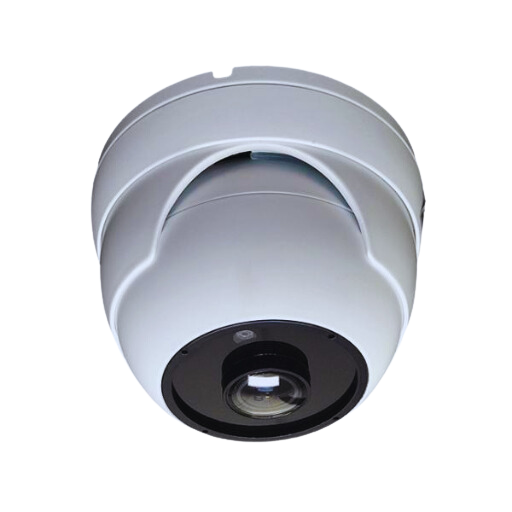
Broad Area Coverage
With a fisheye lens, a single camera can capture an environment in full 360 degrees, covering a significantly larger area than usual. This removes the need for multiple cameras, thereby lowering the primary installation expenses and reducing the blind spots within the monitored region.
Cost-Efficiency
The elimination of blind spots and improved coverage allow businesses to minimize their expenditure on purchasing new equipment. This also reduces the installation cost and the long-term maintenance expenses. Moreover, the integration with existing infrastructure is usually effortless, resulting in a greater reduction of costs.
Reduced Infrastructure Requirements
Fisheye cameras unlike conventional cameras do not need intricate cabling and additional equipment. This greatly simplifies the installation process and ease of wiring infrastructure, especially for large installations where fisheye cameras work best.
Advanced-Data Reporting and Feature Automation
Modern fisheye cameras are equipped with features powered by AI, enabling them to produce detailed data reports such as heat maps, motion tracking, and occupancy monitoring. The reports generated can be used to enhance operational activities, identify patterns, and allocate resources in an optimized manner.
Easy Integration with Other Software Systems
Most fisheye cameras support integration with video management systems (VMS) and other analytical programs and therefore can be used for rapid data retrieval and analysis. It greatly enhances the control and flexibility of surveillance activities.
High-Resolution Imaging
With the application of advanced techniques, high-resolution fisheye cameras contain sensors that provide clear images even when dewarping is applied; enabling the quality of the captured footage to remain unaffected.
Simplified Maintenance
The reduction in the number of cameras necessary for the maintenance of each network node results in a less resource-intensive strategy regarding cleaning, repairs, software updates, and other maintenance tasks.
Improved Situational Awareness
Fisheye lenses offer a uniquely panoramic perspective within a wide range of environments, helping operators to monitor for suspicious activities or changes in real-time with great ease.
Environmentally Friendly
With lower power consumption and less equipment needed, the sustainability of fisheye camera systems is greater than that of traditional surveillance cameras, thus aiding in providing a greener infrastructure.
Even though fisheye security cameras have many benefits, some concerns come to mind. One major issue is image distortion, especially near the range’s boundaries, where the detail can be fuzzy. Moreover, these cameras without sophisticated imaging technology are subpar in low-light situations. There are also blind spots depending on the optimal height and angle where the camera is mounted. Last but not least, although large regions are covered by a wide field of view, focusing on particular areas lessens the quality because digital cropping is needed.
The usability of fisheye security cameras is improved via de-warping technology that corrects the distortion resulting from the use of wide-angle lenses. With the application of bespoke software or hardware, the image taken by the camera which is both curved and distorted is rendered into a flat perspective that can be easily understood. This enables users to concentrate on particular parts of interest with no loss of clarity or resolution. Furthermore, de-warping facilitates video monitoring by producing free standard views like split regions or panoramas, which enhances the ease of analyzing footage, improving surveillance workflows.
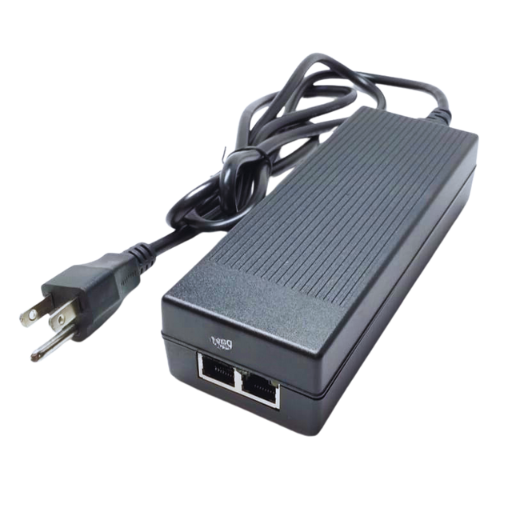
Power over Ethernet (PoE) combines power consumption and data transmission for fisheye cameras over a single Ethernet cable, which simplifies the installation. This removes the burden of having separate power sources, thus saving time and cost associated with installation. Power over Ethernet improves flexibility in the placement of cameras by allowing installation in sites that do not have standard power sockets which enhances coverage and versatility for different surveillance requirements.
A consistent power supply is critical for the uninterrupted operation of fisheye cameras which is essential in video surveillance. With Power over Ethernet (PoE), these cameras receive power and data simultaneously which eliminates the risk of problems from power interruptions. Such reliability is necessary to monitor continuously, maintain security, and capture important footage as it occurs.
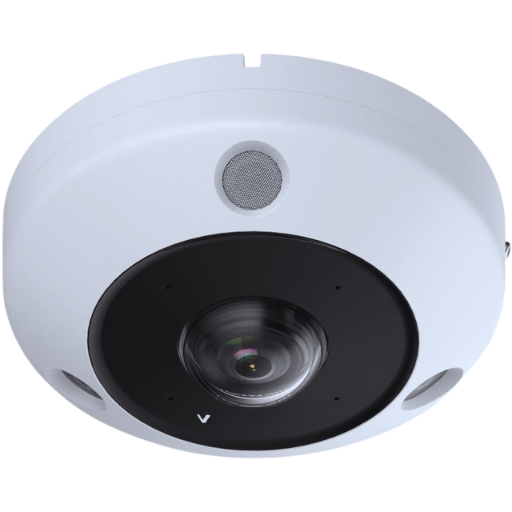
A: Fisheye cameras are easily recognized by their lens capable of capturing a 360-degree image. Their features include an exceptionally broad field of vision, either 180° or 360°, high-definition imaging (usually 1080p or ultra HD), dewarping, and integration with video management systems (VMS). Numerous Fisheye Network IP cameras provide additional features such as sophisticated analytics, weatherproofing IP66, and vandal-proofing IK10.
A: Fisheye cameras use a specific type of wide-angle lens capable of capturing a hemispherical image that can be as broad as 180 degrees and up to 360 degrees. In essence, this produces a distorted image which can be corrected by dewarping software to produce a more natural panoramic view. In general, the camera lens has a 180 to 360-degree angle of view relative to its model and position.
A: Fisheye cameras have numerous advantages for security purposes. They cover wider areas than a single standard camera, decreasing the total number required. Because of this, they are ideal for open spaces, for example, lobbies, warehouses, or parking lots. In addition, advanced analytics integration is often provided by Fisheye IP cameras which, with their 360-degree field of view, can provide complete situational awareness.
A: Yes, several fisheye cameras are suitable for both indoor and outdoor use. Ensure that the cameras have weatherproof ratings IP66 or better to protect against dust and water ingress. Some models also offer vandal-proof constructions (IK10 rated) making them more durable in harsher environments.
A: Dewarping refers to the fixed image captured by a fisheye camera lens. It is a process of correcting the hemispherical or circular image frame to produce a flattened and more lifelike view. The camera itself can do this instantly or through video management software, enabling the user to see the panoramic or multi-view perspective of the single fisheye camera.
A: Both camera types offer unique advantages for use in security systems, but fisheye cameras have a more comprehensive view than dome cameras. One fisheye camera can often replace several standard cameras because it provides 180° or 360° coverage. In contrast, distant objects may be more detailed with the use of dome cameras. It is common for security experts to employ both varieties to ensure complete coverage.
A: To have the best image quality, look for cameras with a minimum resolution of 1080p. Many of the newer models of fisheye cameras now offer four to twelve-megapixel resolutions with clear images and the ability to digitally zoom without greatly compromising the picture’s quality. This feature is helpful when needing to monitor big spaces.
A: Fisheye cameras can be used in an array of circumstances, however, their ideal usage is limited. Retail stores, large outdoor venues, warehouses, and similar locations with less view obstruction make ideal use of fisheye cameras, for that is where they excel the most. On the other hand, for places that need detail-oriented telephoto views, like long hallways, space telephoto lens cameras would be the best option. I would recommend having each surveillance system case thoroughly evaluated and working with security experts to design a complete system.
1. Title: Towards an FA ChatBot with Retrieval-Augmented Language Modeling
Takeaways:
Approach:
2. A Large Language Model Chatbot for Enhancing Physical and Mental Health Diagnosis Through Retrieval-Augmented Generation.
Noteworthy Outcomes:
Procedure:
3. Optimizing Information Retrieval Through a Chatbot Application
Significant Outcomes:
Method of Study: